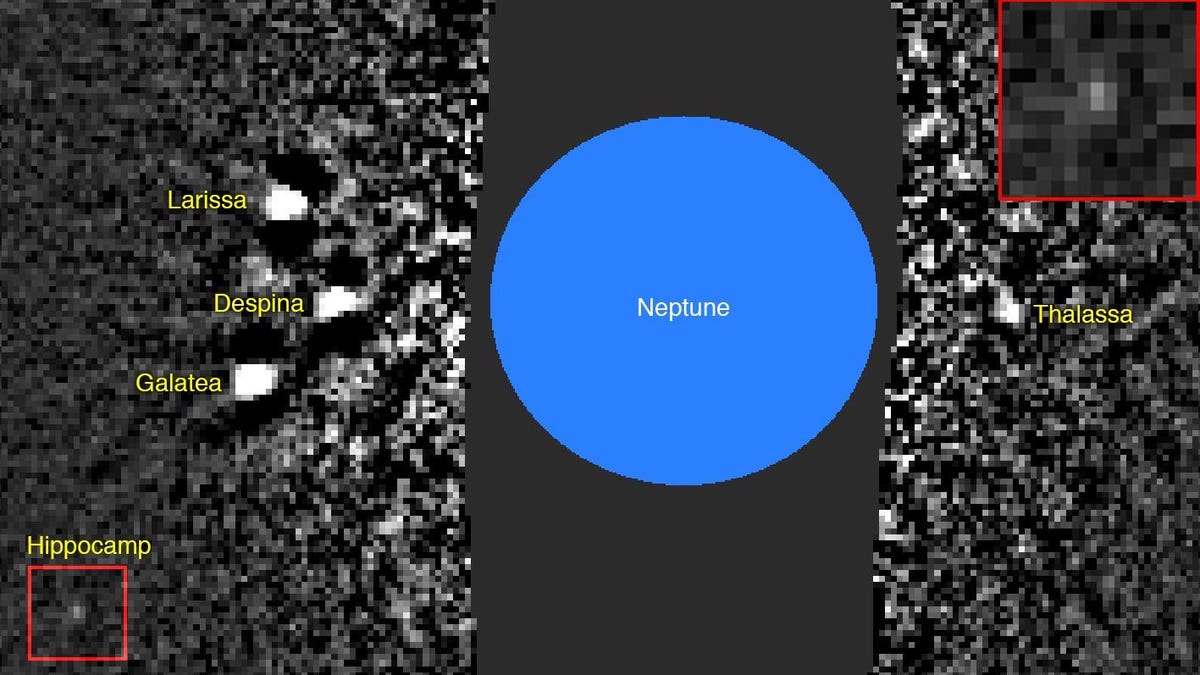Neptune's newfound moon, Hippocamp, might be left over from a comet crash
The Neptune neighbor, missed until now, offers clues to how moons form and shows once again that space is more crowded than it seems.

This is the image that revealed Hippocamp. The moon is visible inside the red box, with an enlarged version inset at upper right.
We might think of our solar system's outer planets as lonely wanderers in cold, deep space. But as astronomers look more closely, it turns out distant worlds like Neptune are kept company by an entourage of tiny moons, including a newly identified one named Hippocamp.
In 1846 just a few weeks after Neptune was discovered, its largest moon, Triton, was also spotted for the first time. Planetary scientist Gerard Kuiper found another, Nereid, in 1949, but it wasn't until Voyager 2's flyby in 1989 that we really started to get a good look at Neptune's neighborhood.
The seven inner moons of Neptune are shown at a consistent set of sizes, along with the planet's bluish limb at right.
The observations made possible by Voyager 2 revealed several small inner moons, which orbit much closer to Neptune and its faint ring than Triton and a handful of little outer moons that would be discovered later.
Now astronomers have been able to confirm the existence of the seventh and smallest inner moon around Neptune, using images from the Hubble Space Telescope and a special image-processing technique. The tiny moon, dubbed Hippocamp after a sea creature from Greek mythology, is only 21 miles (34 kilometers) across and orbits very near Proteus, the largest and furthest away of the inner moons.
Details on the discovery appear in a report published Wednesday by the journal Nature. Co-author Mark Showalter of the SETI Institute and his colleagues suggest that an unusually large crater on Proteus, named Pharos, might provide clues to the formation of nearby Hippocamp.
"We hypothesize that a large impact, perhaps the Pharos event itself, released debris from Proteus into orbit around Neptune," the paper reads. "Some of this debris settled into a stable orbit, perhaps 1,000–2,000 kilometers (621-1,243 miles) interior to Proteus, and accreted into Hippocamp."
No matter how Hippocamp formed, the discovery brings the current roster of moons around Neptune to a total of 14 and further expands the itinerary of places explorers many generations from now may visit in person.

